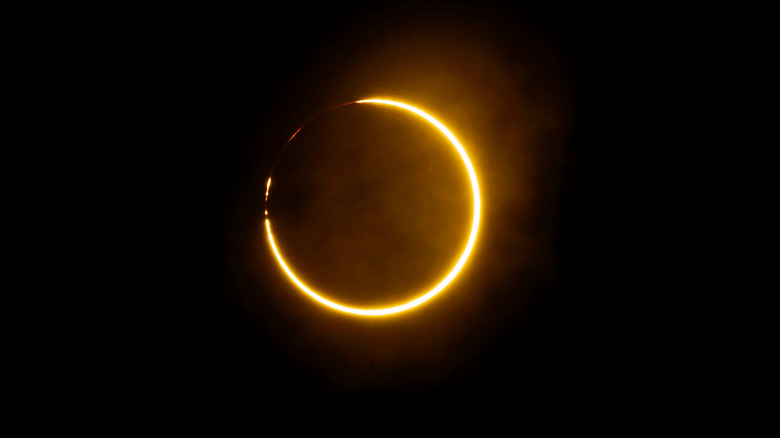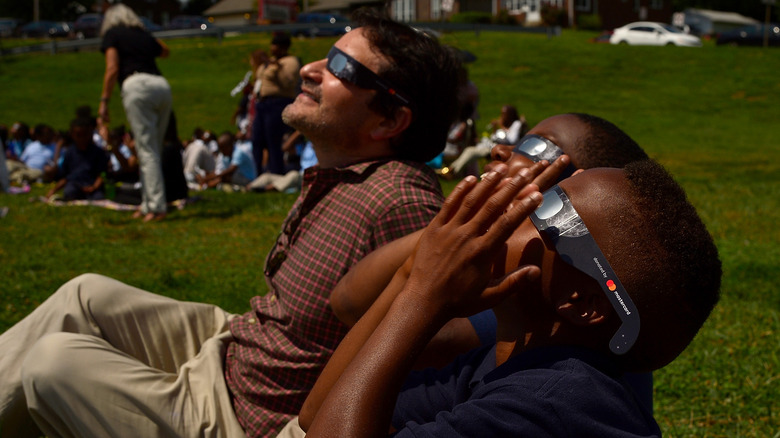How You Can See The June 10 Eclipse
This Thursday, June 10, people living in the northern hemisphere may get to see a solar eclipse (via NASA). Depending where you are located, you may get to see a true "ring of fire," or you may only see a partial eclipse, but in order to try and catch it, you need to make sure you know where to look, when to head outside, and how to do so safely.
A solar eclipse occurs when the moon, during its normal orbit of the Earth, moves between the sun and the Earth. This causes the moon to cast a shadow on the earth, blocking the sun's light. In this case, it will be an annular eclipse, which means happens when the Moon moves between the Sun and Earth, casting a shadow on Earth, fully or partially blocking the Sun's light in some areas. During an annular eclipse, which is what we'll have on Thursday, the moon doesn't fully cover the sun because the moon is far enough away from Earth that it looks smaller than the sun does to us. This creates the illusion that there is one dark disk, smaller than the sun, covering just enough of it to create that "ring of fire" around the dark circle that is the moon's shadow.
While many folks in the northern hemisphere will only see a partial eclipse, those in parts of Canada, Greenland, and northern Russia will get to see a full annular eclipse.
How and when to see the eclipse
For most people, the eclipse will be visible right around the time of sunrise (via Space). To see exactly what time you will get to see the maximum level of eclipse in your city, you can check out this table on Space.com.
It is essential that you never try to watch an eclipse with your naked eyes. Regular sunglasses are not enough protection, either. According to Space, the only truly safe way to look directly at the eclipse is to use one of the following types of protective eyewear: a rectangular arc welder's glass, certified eclipse glasses that are made with black polymer, or a Mylar filter made specifically for this purpose.
Otherwise, your best bet is to project the eclipse onto a piece of paper and watch it that way. You can do this by poking a small hole in something like an index card or other cardboard, and hold another white index card or paper about 2-3 feet behind it. The sun will shine through that hole onto the second paper, and you will be able to see every phase of the eclipse on the paper.

